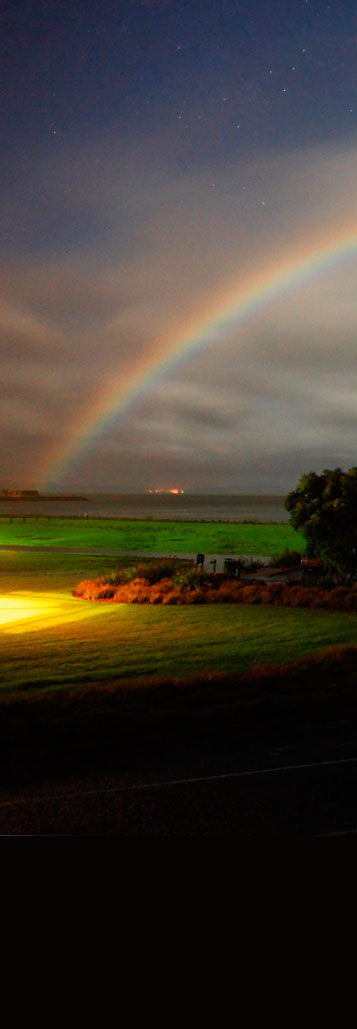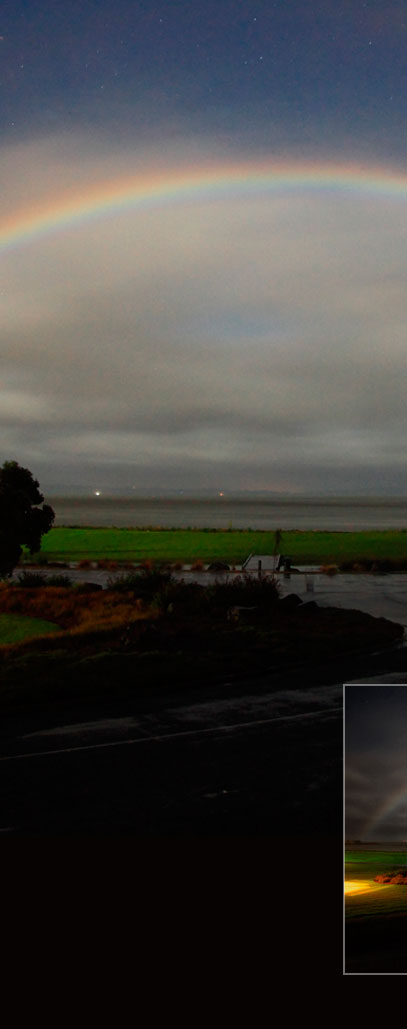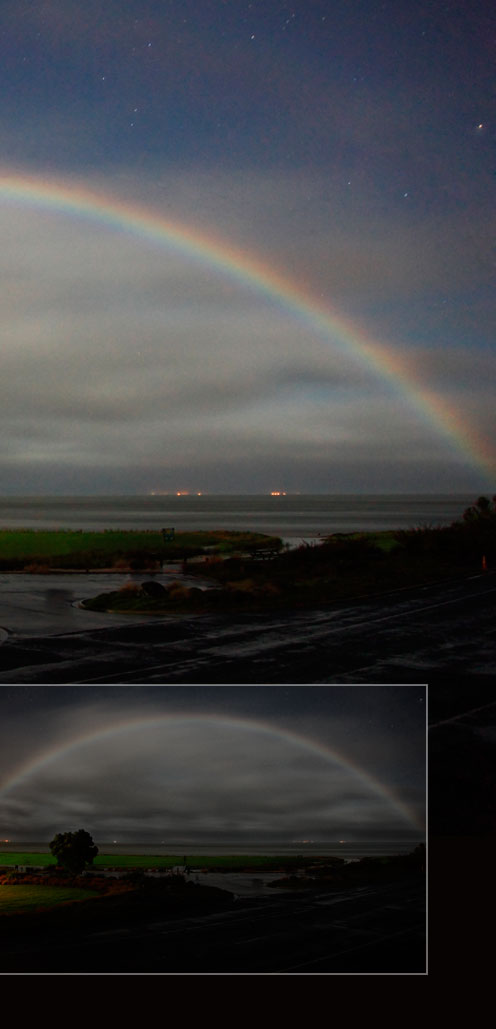 |
 |
 |
Moonbows ~ Primary and secondary moonbows imaged by Paul Alsop near Thames on the North Island of New Zealand January 24, 2011. ©Paul Alsop, shown with permission. |
 |
 |
 |

| About - Submit | Optics Picture of the Day | Galleries | Previous | Next | Today |
| "It was a stormy night. I went for a midnight walk to see what the sea was doing. I looked across the Firth of Thames and saw what I thought was just a weather front at first, but over a period of about 5 minutes the arc developed more into a moonbow. I ran back home to grab my camera and sure enough there is was. The light to the left is a bandstand and not a pot of gold!"
Moonbows have pots of silver at their ends. Moonbows are rare. They need a bright moon less than ~35� high, a dark sky and a rain shower opposite. Frequent showers interspersed with clear skies help. Hawaii, the Scottish Highlands and Isles and Northern Ireland are favoured places for lunar and solar rainbows � New Zealand perhaps needs adding to the list. Long camera exposures bring out the normal rainbow colours but to the unaided eye moonbows are ghostly objects with at most just a hint of colour (at right is an impression of the appearance). The colour receptors in our eyes are not sensitive enough in dim light. A full moon is not needed for a moonbow. The �Moonbow Challenge�, to see a moonbow closest to New Moon, currently stands at 4 days 6 hours from new. |